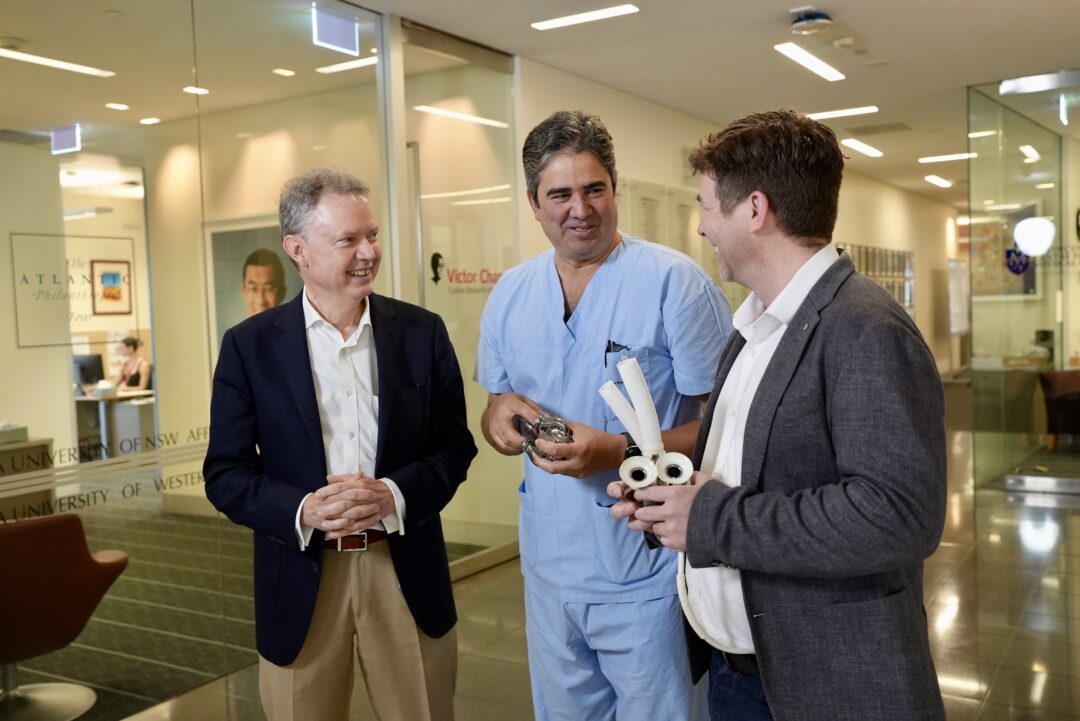Australia’s first BiVACOR Total Artificial Heart
With the successful implantation of Australia’s first BiVACOR Total Artificial Heart, St. Vincent’s has once again confirmed its position as a world leader in cardiac treatment. This innovative operation, which was carried out late last year [2024], gives patients with heart failure new hope and ushers in a new era in heart transplantation.
St. Vincent’s and the Victor Chang Cardiac Research Institute, its research partner, have been at the forefront of heart health for decades, developing innovative technologies and life-altering treatments. Innovation has been central to St. Vincent’s purpose since Dr. Harry Windsor performed Australia’s first heart transplant in 1968 and Dr. Victor Chang founded the National Heart Transplant Program.
In the most recent development, a team headed by Dr. Paul Jansz of St. Vincent’s Hospital in Sydney implanted the ground-breaking BiVACOR Total Artificial Heart, a titanium device that eliminates mechanical wear by having a single moving part, no valves, and a no-contact suspension mechanism.The long-term goal of this device is to permanently replace a human heart, however it was first created as a bridge to transplantation.

L-R: Prof Chris Hayward, Dr Paul Jansz and Dr Daniel Timms (inventor of the device)
On November 22, 2024, at St. Vincent’s Hospital in Sydney Dr Janz operated with the procedure lasting six hours.Without the operation, the patient, a male in his 40s, would not have survived his acute heart failure. In early February 2025, he became the world’s first patient to be released from the hospital with a BiVACOR heart, and in early March, he was given a regular donor heart transplant.
To get the product ready for clinical trials, a group headed by Professor Chris Hayward of the Institute collaborated with BiVACOR engineers and other partners, including Monash University. Professor Hayward’s team, which is headquartered at the Institute and St Vincent’s Hospital in Sydney, was able to install the device in the chests of heart transplant patients in order to gain knowledge regarding its fit and placement thanks to MRFF funding and an Australian government TTRA award.
Over 23 million individuals worldwide suffer from heart failure each year, and some of these patients will eventually need a heart transplant.There are only 6,000 donor hearts available annually, which is a very small amount in comparison to the enormous need. St Vincent’s is committed to pioneering new treatments and advancing heart health.
Although the device is currently intended to serve as a bridge to keep patients alive until a donor heart transplant becomes available, it is anticipated that within five to six years, it will be a competitive alternative to transplantation.
Source: St Vincents Hospital Sydney| Dr Victor Chang Cardiac Research Institute